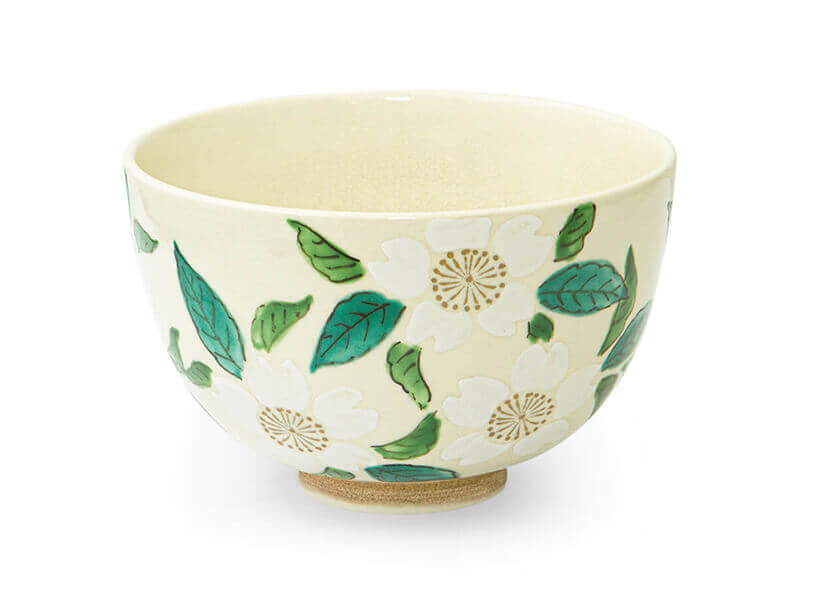Hanami - The festival of the cherry blossom

How Japan came to cherry blossom
For over 1000 years, the Japanese have been celebrating 花見 Hanami, the Cherry Blossom Festival – literally "flower viewing." During Hanami season, most tourists flock to the country, as the beautiful bloom is not only a visual delight but also a symbol of Japan. It's no wonder when you observe Japanese landscapes in April, where suddenly hundreds of white and pink blooming trees line the paths. This magical sight attracts locals to parks and riverbanks, where picnics and parties take place.

Deeply rooted in Japanese culture is the admiration for nature and the beauty of its fleeting seasons, where the Sakura cult originates. In the 8th century, Hanami initially revolved around plum blossoms, which begin to bloom as early as February and, like other aspects of culture during that time, came from China. Many poets had paid homage to the plum in Haiku, traditional three-line poems.

However, as diplomatic and trade relations with China were severed in the Heian era at the end of the 9th century, the cultural influence from the neighboring country receded. The cherry blossom then became the most beloved flower in Japan. When reading "flower" in Japanese poems, it has meant Sakura since then, and in traditional paintings, it is depicted as an object of admiration in Hanami. Since then, various types of cherry blossoms have been cultivated for decoration, allowing everyone to enjoy the Cherry Blossom Festival. Along with the wild varieties in the mountains and forests, they are now an integral part of the Japanese landscape.
Japanese stores in full bloom
Originally, parks filled with cherry trees were a popular destination for poets and artists, workshops for traditional crafts like Ikebana, and the setting for the tea ceremony. Since the rise of the Shogunate in Japan in the 16th century, Hanami became a favorite pastime of the samurai elites.
Today, in larger parks throughout Japan, street festivals take place featuring snacks, beer, hot sake, and much more. In many places, the cherry blossoms are additionally illuminated with lanterns after sunset, allowing the celebration to extend into the night. Popular landmarks like large temples and shrines also open their doors in the evening, with elaborate decorations and lighting showcasing the trees against a unique backdrop. Hanami in the dark is called Yozakura and has always been more festive than during the day.

In Japan, especially food manufacturers do not miss any festival. No wonder, in spring, products with cherry flavor and flower decorations dominate stores, bakeries, and cafes. From french fries with pink seasoning to rice cakes with cherry glaze, and even Sakura chocolate and milkshakes, you can find everything. The sales increase with the growing number of visitors from around the world, and the souvenirs with pink blossom patterns are also popular among locals.
Hanami culture from early to late
To celebrate Hanami like a local in Japan, all you need is a picnic blanket, delicious food, and, most importantly, good timing – as the most popular spots for cherry blossom viewing get occupied early. It's advisable to spread your blanket on the grass early and leave a note with your name and arrival time. It's essential to stick to the schedule: Since punctuality is highly valued in Japan, the chosen spot might be taken if you're late!
For company celebrations, lower-ranking employees are responsible for guarding the best spots from early morning. After work, people enjoy food, drinks, and Sakura in the company of colleagues. On weekends, families gather under the cherry blossoms. Even before the first Sakura bloom, fields and spaces under the trees are filled with blue blankets and joyful, amazed visitors.
Although Hanami is often associated with drunken fun, the cherry blossom festival is also celebrated in unusual places. The Yanaka and Aoyama cemeteries in Tokyo, for example, are popular locations to quietly and respectfully enjoy beautiful rows of cherry trees.

Where the festival lasts for months
A grand event like this requires careful planning. As early as winter, the Japan Meteorological Society releases a forecast for when the first cherry blossoms will appear. Just as the daily weather report is meticulously followed to avoid leaving the house without an umbrella, the Japanese don't miss any news about the current blooming status.
The best time for Hanami is usually late March to mid-April. The city of Yoshino near Nara in southwestern Japan declares itself the world capital of cherry blossoms in April because the view of the cherry trees on the hills and in the parks surrounding Mount Yoshino is the most splendid across the country at the best time.
On the warm island of Okinawa in southern Japan, the first cherry blossoms bloom as early as January, and you can still admire the last ones on the northern island of Hokkaido until May. Some varieties only reach full bloom in the fall. The weather plays a crucial role: If it's too cold for the cherry trees, the blossoms will appear later.
Every cherry blossom is different
A cherry tree blooms only for a few days to a week – that's why Sakura also symbolizes the transient beauty of life. However, many varieties are cultivated together, opening their blossoms at different times. This allows people to enjoy Sakura gradually throughout the entire month of April.
The color spectrum ranges from dark pink to white and yellow. The various blossom shapes and tree structures make the cherry blossom landscape diverse. The following varieties are particularly common in Japan:
- Kanhizakura blooms as early as February in southern Japan and is recognized by its bell-shaped dark pink flowers
- Most cherry trees in Japan bear the nearly white blossoms of the Yoshino cherry
- The wild Yamazakura – "mountain cherry" – displays its leaves simultaneously with the delicate pink cherry blossoms
- Shidarezakura, the weeping cherry blossom, captivates with its colorful dense flowers, often consisting of more than the characteristic five petals
- Ichiyo also has many delicate pink petals and is in full bloom in mid-April
- Only at the end of April do the dense purple blossoms of the Kanzan cherry open

You can also celebrate Hanami in Germany: In Hamburg, the Japanese Cherry Blossom Festival has been taking place at the end of May for almost 50 years, celebrating Japanese culture and the city's partnership with Osaka. And among the many cherry trees that bloom everywhere, you can enjoy a relaxed picnic with your loved ones. A glance at the blossoms in the spring sun is enough to immerse yourself in the Japanese fascination with fragile nature and the changing seasons.

















-from-the-yakiyaki-grill-pan.jpg)




